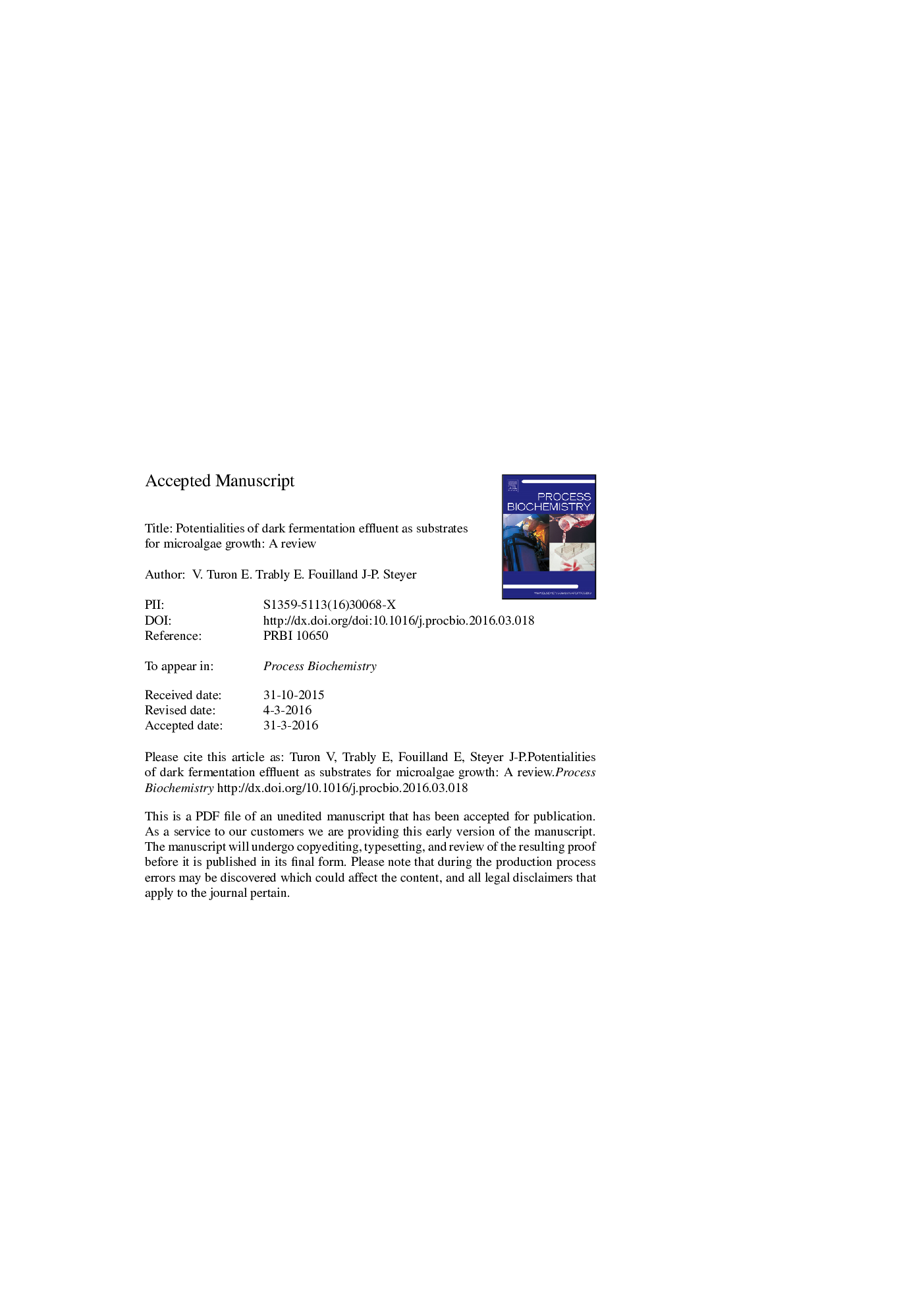| Article ID | Journal | Published Year | Pages | File Type |
|---|---|---|---|---|
| 4755159 | Process Biochemistry | 2016 | 31 Pages |
Abstract
In this work, the feasibility of using DF effluents to sustain HCM has been thoroughly reviewed and evaluated. Promising perspectives in terms of microalgae biomass and lipids production are proposed and can be extended as guidelines to promote HCM whatever the organic waste used. Abiotic and biotic factors from DF effluents that promote or inhibit microalgae growth are discussed as well as the use of unsterile DF effluents. Overall, the microalgae growth is favored on effluents containing high acetate concentration (>3 g Lâ1), with a high acetate:butyrate ratio (>2.5), and when pH is strictly controlled. At a low acetate:butyrate ratio (<1) and/or high total metabolites concentrations (>10 g Lâ1), a low substrate:microalgae ratio and the presence of light appear to enhance microalgae growth. Butyrate content appears to be a key factor when coupling DF/HCM since high butyrate concentration inhibits the microalgae growth.
Related Topics
Physical Sciences and Engineering
Chemical Engineering
Bioengineering
Authors
V. Turon, E. Trably, E. Fouilland, J-P. Steyer,
